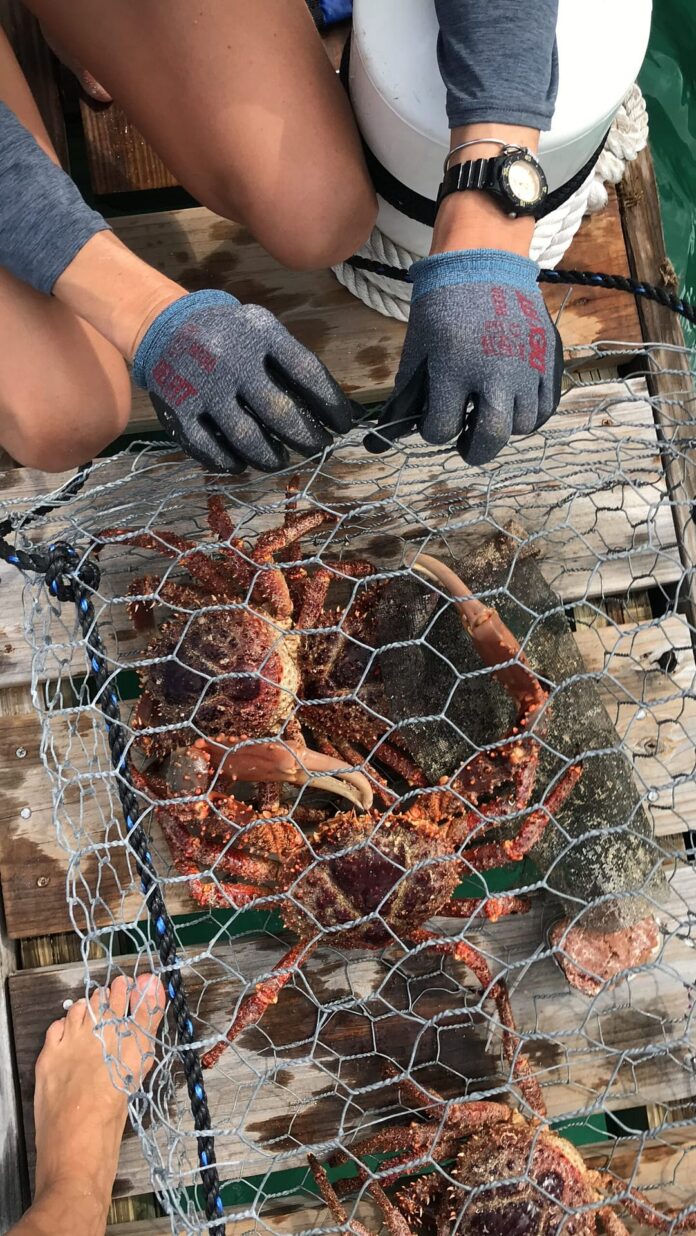If you’ve ever snorkelled over a Caribbean reef and noticed more seaweed than coral, you’re not imagining things. These underwater ecosystems, once bustling with vibrant coral colonies and schools of tropical fish, are slipping into decline. But scientists from across the region are turning to some unlikely allies in their fight to save dying coral reefs: sea urchins and crabs.
A recent paper published in _Restoration Ecology_ details promising developments in what could be a game-changing approach to reef conservation. The collaborative review was spearheaded by Antigua’s environmental non-profit, Elkhorn Marine Conservancy (EMC), and led by EMC’s Dr. Margaret W. Wilson, along with other EMC members – Monique Bigler and Genevieve Renaud-Byrne. The EMC team joined experts from Florida, Puerto Rico, Mexico, and Saba, to explore the potential of restoring herbivorous invertebrates to combat one of the greatest threats facing Caribbean reefs today—algal overgrowth.
Coral Reefs Need Gardeners
Herbivory—the act of plant-grazing—isn’t just a quirk of reef life, it’s essential. Algae grow fast, and if left unchecked, they smother and poison corals and also prevent juvenile coral from establishing themselves. Historically, both fish (like parrotfish and doctorfish) and invertebrates (like the black-spined sea urchin _Diadema antillarum_), nibbled back the algae threatening to stunt and kill coral colonies. But a mysterious disease in the 1980s wiped out nearly 98% of these urchins, triggering a slow-motion disaster. Without these grazers, algae ran rampant, outcompeting corals and ushering in a new, less hospitable era for reefs. Coupled with heavy fishing pressure on herbivorous fish in recent decades, reefs have tilted dangerously toward algal dominance.
To flip the script, scientists are experimenting with reintroducing a variety of invertebrate grazers—not just the once-dominant _Diadema_ , but also lesser-known players like _Tripneustes ventricosus_ (a seagrass-loving urchin also known as a sea egg) and giant Caribbean king crabs (_Maguimithrax spinosissimus_). These creatures aren’t picky eaters. Some even munch on algae that fish avoid.
Farming the Future of Reefs
The research team’s findings reveal significant progress and persistent challenges in herbivore restoration efforts. Scientists have made breakthroughs in breeding and raising these and other herbivore species in laboratory settings. However, scaling up these efforts remains difficult, particularly during the juvenile grow-out phase, which demands considerable space and resources. Restoring these creatures isn’t as easy as tossing them back into the ocean. It’s part farming, part science fiction.
Researchers are raising these grazers in high-tech aquaculture setups—gently nudging them through delicate larval stages, feeding them microalgae, and sometimes even tricking them into spawning with light and temperature cues. It’s painstaking work: _Diadema_ larvae are notoriously fragile, requiring weeks of gentle care before they’re ready for release.
Some species, like the king crab, are more robust, with fast-growing and less sensitive juveniles. But others, like _Diadema_ , still present steep challenges—especially when it comes to survival in the wild.
And even when scientists succeed in growing these critters to a viable size, many disappear after release. Predators, wave exposure, and poor site selection often mean the animals don’t stay put. That’s led researchers to explore everything from underwater “urchin hotels” for protection, to stocking only in places with the right shelter and food.
Not Just More, But Smarter
Beyond the logistical hurdles, there’s a deeper question: how many urchins and crabs are enough? How do we know if they’re making a difference?
New techniques like 3D photogrammetry and underwater mapping are helping conservationists track algal cover and coral recovery more precisely. Scientists are also refining strategies to avoid creating unintended consequences, like too much bioerosion from overzealous urchins or triggering algal shifts that don’t benefit corals.
It’s a delicate dance—but one that might be essential for saving reefs.
Despite these challenges, the researchers remain optimistic. Their work has identified several promising directions for future research, including:
- Expanding restoration efforts beyond sea urchins to include various crab species
- Expanding the number of species of invertebrates employed in restoration efforts
- Developing more efficient methods for growing juvenile herbivores to releasable size
- Improving techniques for successfully introducing and retaining herbivores on reefs
- Conducting longer-term studies to quantify the ecological benefits of herbivore restoration
A Patchwork Path to Recovery
This isn’t about reverting to the past, the researchers stress, but creating resilient reefs for the future. By harnessing the power of different invertebrate grazers—each with unique strengths—they aim to restore balance and create coral-friendly conditions even in the face of warming seas and human pressures.
As EMC’s science lead Dr. Margaret (Molly) Wilson, puts it, “We’re not just trying to bring back species. We’re trying to rebuild function. Invertebrate grazers may be one of our best tools for doing that.”
So the next time you see a spiny urchin or a slow-moving crab on the reef floor, think of them not as background players—but as frontline workers in one of the Caribbean’s most important restoration stories.


